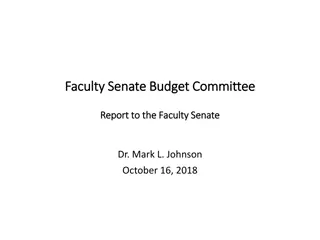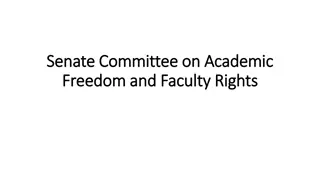University of Memphis Faculty Senate Orientation 2024: Parliamentary Procedure
Application of parliamentary law for effective decision-making in assemblies of any size, emphasizing adherence to speaking protocols, Robert's Rules of Order, making motions, stating questions, and conducting debates.
Download Presentation

Please find below an Image/Link to download the presentation.
The content on the website is provided AS IS for your information and personal use only. It may not be sold, licensed, or shared on other websites without obtaining consent from the author.If you encounter any issues during the download, it is possible that the publisher has removed the file from their server.
You are allowed to download the files provided on this website for personal or commercial use, subject to the condition that they are used lawfully. All files are the property of their respective owners.
The content on the website is provided AS IS for your information and personal use only. It may not be sold, licensed, or shared on other websites without obtaining consent from the author.
E N D
Presentation Transcript
University of Memphis Faculty Senate Orientation 2024 Parliamentary Procedure
PARLIAMENTARY LAW The application of parliamentary law is the best method yet devised to enable assemblies of any size, with due regard for every member s opinion, to arrive at the general will on the maximum number of questions of varying complexity in a minimum amount of time and under all kinds of internal climates ranging from total harmony to hardened or impassioned division of opinion. Robert s Rules of Order Revised 12thEd.
UNIVERSITY OF MEMPHIS STANDING RULES SPEAKING PROTOCOL Before addressing the assembly, the speaker will clearly speak his/her name and area of representation. Ex. Mark Sunderman, Fogelman College of Business and Economics
MAIN MOTIONS Making Motions From a Committee: Requires no second From a member Any member of the Senate may submit to the Executive Committee items, including motions, no later than 10 days in advance of the Faculty Senate meeting at which the item is to be considered. (From Special Rules of Order Faculty Senate Articles of Authority)
MAIN MOTIONS Stating the Question Once a motion has been made and seconded (if required) the presiding officer (FS President) of the meeting states the question on the motion. At this point, the control of the motion is in the hands of the assembly.
DEBATE In General To speak regarding a motion, a member must be recognized by the presiding officer. Before addressing the assembly, the speaker will clearly speak his/her name and area of representation.
DEBATE In General In the debate each member has the right to speak twice on the same question in a given day. However, they cannot make a second speech on the same question until all member who has not spoken on that question have had an opportunity to speak. A member who has spoken twice on a particular question on the same day has exhausted their right to debate that question for that day.
DEBATE In General Without permission of the assembly, no one can speak longer than 10 minutes on a motion. Speakers must address their remarks to the presiding officer and not to another speaker. Debate must be confined to the merits of the pending question. Speakers should maintain a courteous tone and avoid interjecting a personal note into the debate.
DEBATE Move to Limit or Extend Debate This motion can (1) limit (or extend) the length of speeches; (2) limit (or extend) the time for the debate to a certain length; or (3) limit (or extend) debate to end at a certain time. Requires a second and is not debatable. 2/3 vote required to pass. Can be reconsidered.
Amendments Move to Amend Enables members to propose changes in the wording of the main motion. Requires a second and is debatable. While under discussion, there is no discussion on the main motion. Adopted by majority vote. If adopted by the members, then continue discussion of the main motion as amended.
Amendments Friendly Amendments Must still receive a second and must be debated and voted on formally regardless whether the maker of the motion accepts the amendment. Presiding officer can ask if there is any objection to adopting the amendment. If no objection the presiding officer may declare the amendment adopted.
MOTIONS TO END DEBATE OR POSTPONE DEBATE Move the Previous Question (Call the Question) Used to close debate and vote on the motion on the floor. Requires a second and is not debatable. Requires a 2/3 vote. If passes, the members then vote on the main motion on the floor.
MOTIONS TO END DEBATE OR POSTPONE DEBATE Move to Refer to Committee Used to send the main motion to a committee for further review. Requires a second and is debatable. Amendable as to the committee chosen. Requires a majority vote.
MOTIONS TO END DEBATE OR POSTPONE DEBATE Move to Postpone Indefinitely By use of this motion the assembly can decline to take a position on the main question. Its adoption kills the main motion for the duration of the session. Requires a second and is debatable. Not amendable. Requires a majority vote.
MOTIONS TO END DEBATE OR POSTPONE DEBATE Move to Postpone to a Certain Time (or Postpone Definitely) This is a motion by which action on a pending question can be put off, within limits, to a definite day, meeting, or hour, or until after a certain event. Requires a second and is debatable. Can be amended as to the time. Requires a majority vote.
MOTIONS TO END DEBATE OR POSTPONE DEBATE Move to Lay on the Table (Move to Table) Enables the assembly to lay the pending question aside temporarily when something else of immediate urgency has arisen or when something else needs to be considered before consideration of the pending question is resumed. Requires a second and is not debatable. Requires a majority vote.
MOTIONS REGARDING PROCEDURE OR INFORMATION Request for Information or Point of Information A request directed to the presiding officer or through the presiding officer to another officer or member for information relevant to the business at hand but not related to parliamentary procedure. A member can make a request while another member has the floor.
MOTIONS REGARDING PROCEDURE OR INFORMATION Parliamentary Inquiry A question directed to the presiding officer to obtain information for a matter of parliamentary law or the rules of the organization bearing on the business at hand. A member can make a request while another member has the floor. The presiding officer responds to the inquiry.
MOTIONS REGARDING PROCEDURE OR INFORMATION Point of Order (Parliamentary Procedure) A member uses a point of order to bring to the assembly s attention that there has been a breach of parliamentary procedure. A member can make a request while another member has the floor. The presiding officer rules on the point of order.
Any Questions presfacultysenate@memphis.edu 901-678-2942
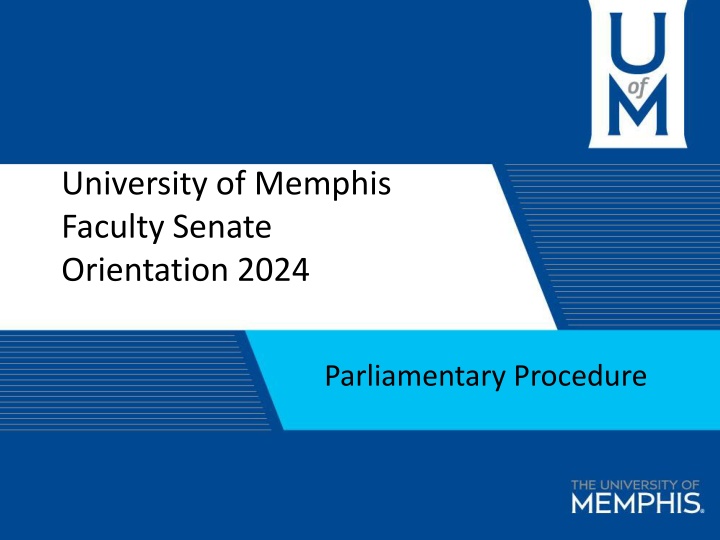

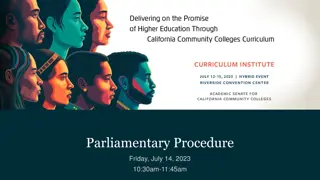
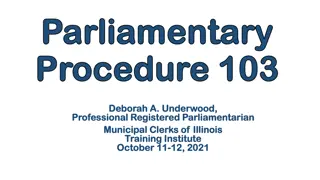
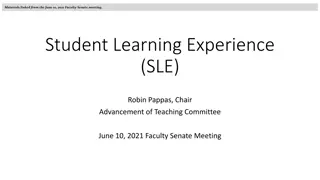
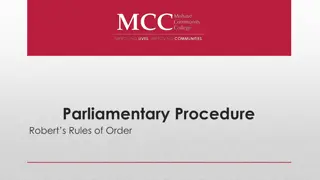


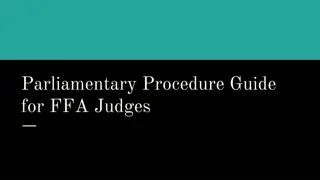
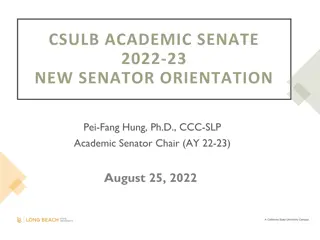
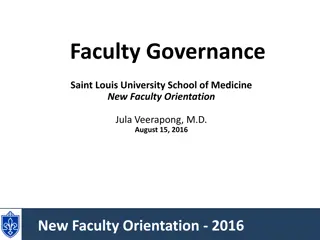


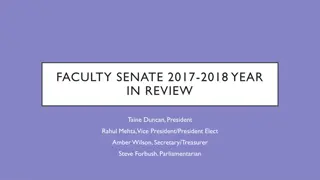
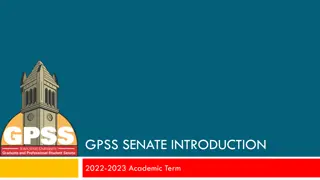
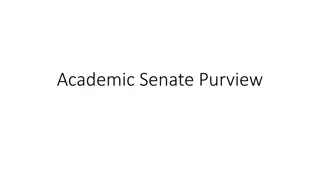

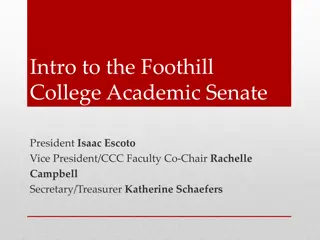
![Overview of the Faculty Senate at [Institution Name]](/thumb/233771/overview-of-the-faculty-senate-at-institution-name.jpg)
